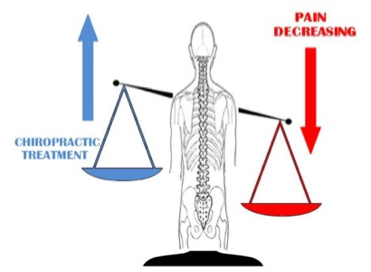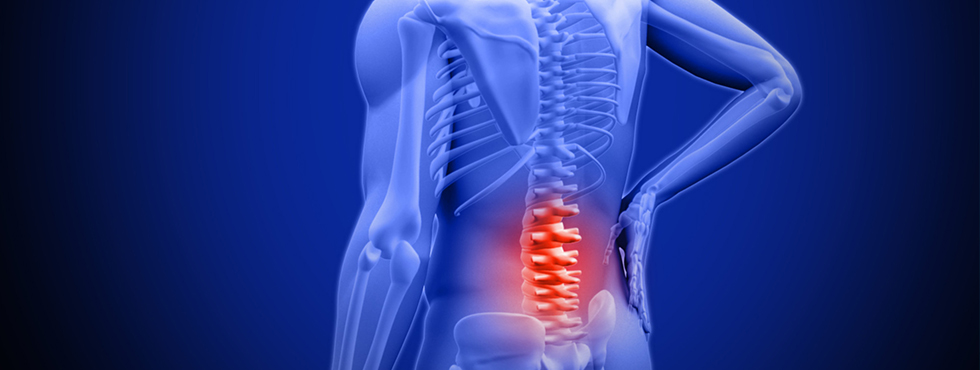Who’s Best To Treat Back Or Neck Pain?
Objective and independent scientific research studies that compare the benefits of chiropractic treatment for low back pain to existing recommended medical treatment (such as physiotherapy and medication) have demonstrated that chiropractic treatment was more effective (both in the short and long term). These research studies were conducted by respected scientific institutions, for example; Prof. Meade et. al (1,2). Lawrence et. al.(3)
Meade found that ‘chiropractors received significantly superior results for back pain patients than did physical therapist.’
Lawrence’s review of research on chiropractic management of low back pain and related leg complaints (such as sciatica) confirmed:
1. ‘There is evidence that high velocity, low amplitude adjustments (HVLA) [as performed by chiropractors] have “better short term efficacy than mobilization or diathermy”. Mobilization and diathermy are common treatments used by physical therapy. 2. ‘For (long term) chronic low-back pain, there is evidence that HVLA is better than physical therapy and home exercises and better than general medical care or placebo.’
Carey et. al (4) showed that medical doctors trained in postgraduate spinal manipulation proved unable to assess and treat back pain patients successfully.
A study published in the British Medical Journal conducted on physiotherapy at Warwick university concluded; ‘using physiotherapy to treat mild to moderate low back pain was a waste of money and time – it doesn’t make a difference’.(5)
Interestingly, ‘90% of back pain sufferers stop seeing their GP within three months – but most of them are still in pain a year later’. (Croft, Macfarlane et.al. Outcome of low back pain in general practice: a prospective study, BMJ 1998).

Studies On Low Back Pain
“Chiropractic manipulation is safer and more cost effective than medical management of low back pain” (LBP). There is good empirical evidence that patients are very satisfied with chiropractic management of LBP.” Manga P et al. Study funded by the Ontario Ministry of Health, Canada, 1993.
“Manipulation of the low back is recommended during the first four weeks of symptoms, with or without medication, in conjunction with low-stress exercise followed by conditioning exercises after two weeks.” Clinical Practice Guidelines of the Agency for Health Care Policy and Research (AHCPR), Department of Health and Human Services, USA, 1994.
“Consider manipulative treatment within the first six weeks for patients who need additional help with pain relief or who are failing to return to normal activities. The risk of manipulation is very low in skilled hands.” Clinical Guidelines of the Royal College of General Practitioners et al, UK, 1996.
“Manual therapy, including spinal manipulation, is recommended for patients with acute low back pain and functional limitations of more than 2 to 3 days duration, and for acute exacerbations of recurrent or chronic low back pain and functional limitation.” Study by the Danish Institute for Health Technology Assessment, National Board of Health, Denmark, 1999.

Studies On Neck Pain
The Bone & Joint Decade task force report indicates that; “manual treatments such as spinal manipulation are supported by research as Safe, Effective and appropriate for most patients with neck pain (grade 1 and 2)”. Haldman et. al (6)
“Cervical spine manipulation and mobilization probably provide at least short-term benefits for some patients with neck pain and headaches.” Hurwitz EL et al. 1996.
Studies On Headache
“Cervical spinal manipulation is effective for the treatment of cervico-genic headache and of tension-type headache.” Evidence Report by the Duke University Evidence-based Practice Center, USA, 2000.
Studies On Whiplash
“Interventions that promote activity such as mobilization, manipulation, and exercise in combination with medication are effective on a time limited basis in the treatment of whiplash-associated disorders.” Scientific Monograph of the Quebec Task Force on Whiplash-Associated Disorders, Canada, 1995
Incidence Of Back Pain
Some 85% of those people suffering from low back pain will experience recurrent episodes and suffer ‘cyclic back pain’. Andersson (7) This is because they do not receive quickly enough the appropriate care and treatment of their condition.
The CSAG (Clinical Standards Advisory Group) has concluded that 85% of the population will develop back pain of which 95% is mechanical in origin. Mechanical back pain responds well to chiropractic care.
Mechanical pain can be defined as ‘pain caused by an alteration of the normal biomechanics of the spine and pelvis’. Loss of movement is seen in the vertebral facet joints and Sacroiliac joints with inevitable sprain /strain of the overlying ligaments and muscles.
Among chronic disorders, lower back pain is the second greatest cause of visits to a physician, the fifth most frequent reason for hospitalisation and the third most common reason for surgery. Andersson (8)
Dolce and Raczynski(9) have demonstrated that back pain alone has a yearly average incidence of 50 out of 1000 workers, whilst a Dutch working population survey showed that for sedentary office workers the incidence of back problems was higher than the national average number of low back pain sufferers within the working population. Hilderbrandth H, et. al (10)
Interestingly, the incidence of back pain is only slightly less common in office workers than for industrial workers who are active throughout their day. Himmelstein and Andersson (11)
Despite better medical care, increasing exercise awareness and safer working environments, the incidence of back pain continues to increase. Research has demonstrated that 85 per cent of Americans experience low back pain by the time they are 50 years old.
Andersson et. al. (7) Andersson (12)
The vast majority of back pain is not caused by an identifiable event such as a fall. Researchers believe that the majority of back pain that appears to occur suddenly is actually the culminations of long term damage and the consequence of repetitive micro trauma of many, many years. Snook SH (13)
1. Meade et. al (1990) Low-Back Pain of Mechanical Origin: randomized Comparison of Chiropractic and Hospital Outpatient treatment Br Med J 300: 1431-37
2. Meade Et. Al. (1995) Randomized Comparison of Chiropractic and Hospital Outpatient management for Low Back Pain: Results from extended Follow Up, Br Med J 311:349-351
3. Lawrence et. Al (2008) Chiropractic Management of Low Back Pain and Low Back Related Leg Complaints: A Literature Synthesis’ J Manipulative Physiol Ther: 32(1) : 14-24
4. Carey et. Al (2000) Training Primary Care Physicians to Give Limited Manual Therapy for Low Back Pain, Spine; 25 922): 2954-2960
5. Frost, H (2004) Randomised controlled trial of physiotherapy compared with advice for low back pain BMJ 2004;329:708 doi:10.1136/bmj. 38216.868808.7C (Published 17 September 2004)
6. Haldman et. Al (2008) The Bone & Joint Decade 2000-2010 task force on Neck Pain and Its Associated Disorders. Euro Spine J 17 (suppl.1): s1-s220
7. Andersson et. al ( 1979) Prevalence of Low Back Pain. Sjukvardens Och social vardens planerings och rationalserings: Institue rapport 22. 11
8. Andersson (1991) Epidemiology of spinal disorders: The adult spine’ Principles and Practic,Frymoyer j (ed.), New York: raven Press 107
9. Dolce and Raczynski (1985) Neuromuscular activity and electromyography in painful backs Psychological and biomechanical models in assessment and treatment. Psychol Bull 97: 502-520
10. Hilderbrandth H, et. al (1990) The back up: The effects of the back up on the musculoskeletal load during display work
11. Himmelstein and Andersson (1988) Low Back Pain: risk evaluation and pre placement screening. Occpational Med. 3. 255
12. Andersson (1981) Epidemiological aspects of low back pain in industry. Spin 6. 53

